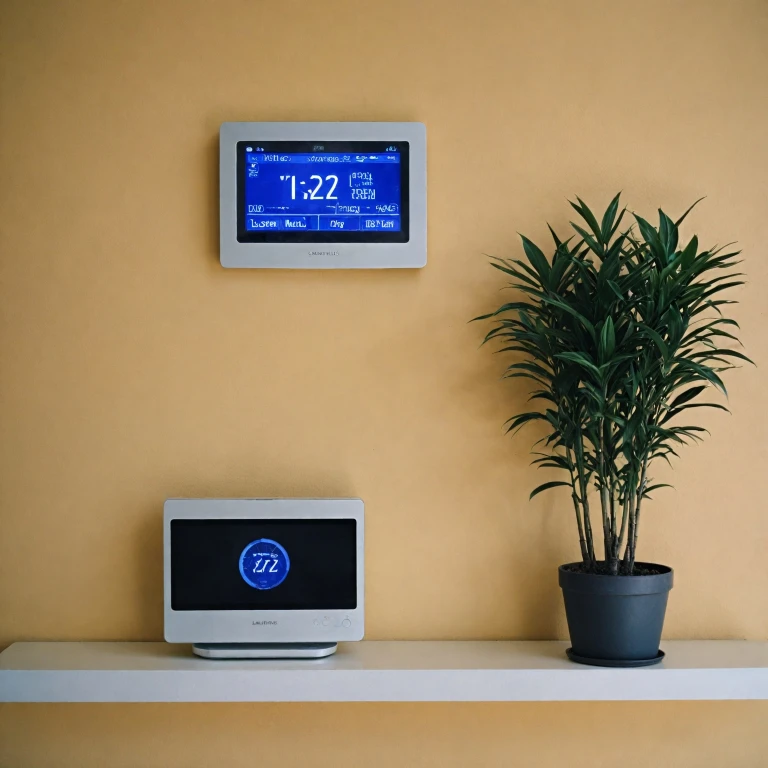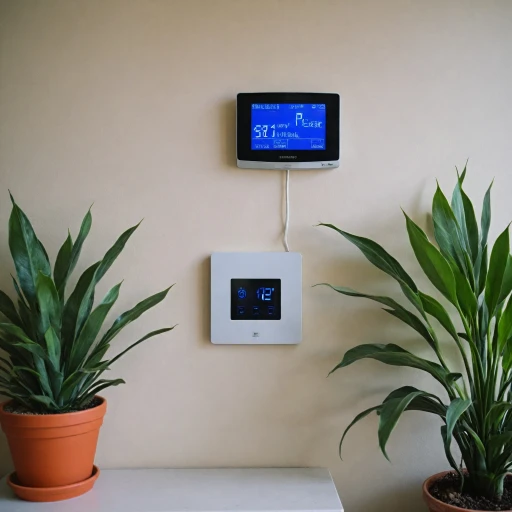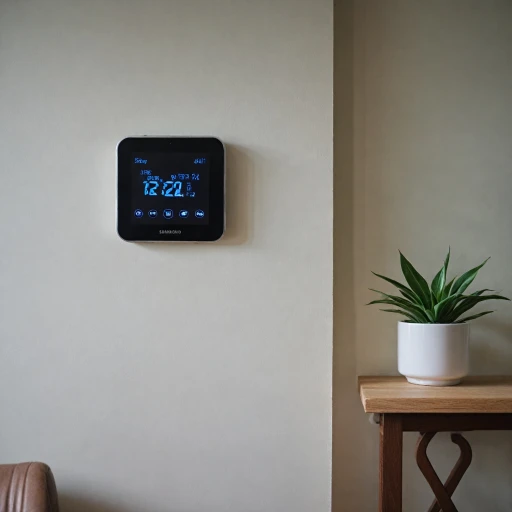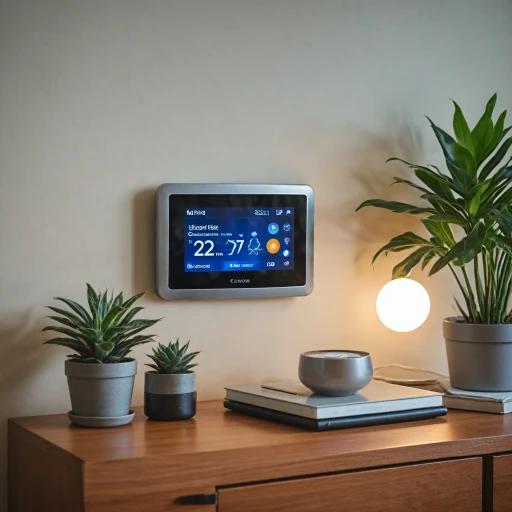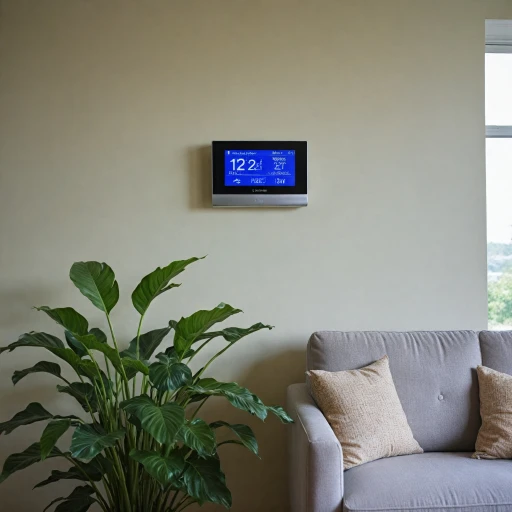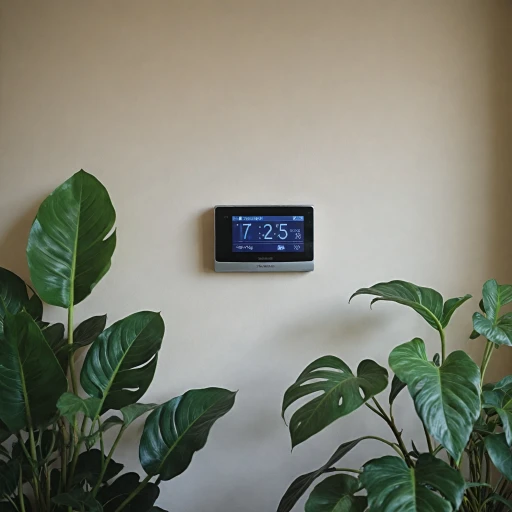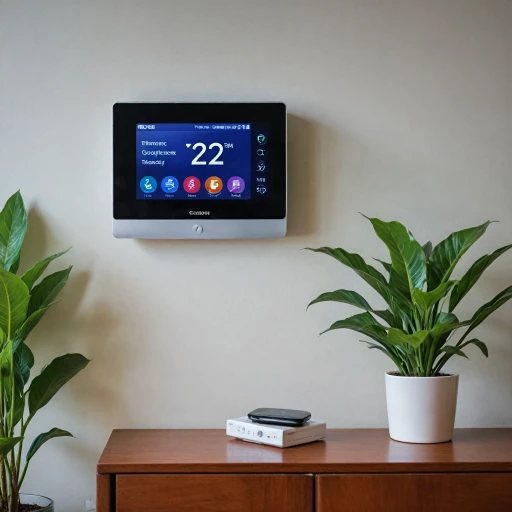
Understanding the Evolution of Smart Thermostats
Tracing the Path of Smart Thermostat Development
The introduction of smart thermostats revolutionized how we control the comfort of our homes, paving the way for advanced devices like the Nest Learning Thermostat. Over time, technological advances have allowed these devices to go beyond simple temperature adjustments. They've evolved into comprehensive energy management systems, helping homeowners save energy and money. Today, devices like the Google Nest Learning Thermostat reflect a culmination of this evolution. Early versions, including the previous Nest models, were instrumental in setting the standard for what a smart thermostat could achieve. The integration of machine learning allowed these devices to automatically adjust heating and cooling based on user habits, greatly improving energy efficiency. Key advancements throughout the generations include responsive temperature sensors and a sleek, polished display that provides critical information at a glance. The ability to control the thermostat via the Google app offers unmatched convenience, allowing users to manage their home's HVAC system from anywhere. Moreover, the concept of a thermostat system equipped with smart sensors and compatibility with various HVAC configurations, such as heat pumps, marks a significant leap forward. This not only enhances comfort but also encourages efficient energy use, proving that smart thermostats are designed to deliver both convenience and sustainability. Smart thermostats today are more than just devices for regulating temperature. They embody a sophisticated approach to home energy management. For a deeper exploration into how modern thermostats interface with advanced systems like heat pumps, you can read more about the role of a heat pump thermostat in modern homes. This broader understanding emphasizes both the historical context and the continued innovations in smart home technology.Key Features of the Nest Learning Thermostat 4th Generation
Distinctive Features of the 4th Generation
The Nest Learning Thermostat 4th Generation brings significant enhancements that build upon its predecessors, providing users with a more intuitive and seamless heating and cooling experience. Notably, it integrates advanced features that contribute to energy saving and user convenience.Enhanced Display and Sensor Technologies
A standout attribute of the latest Nest thermostat is its improved display. The screen's polished design offers better readability and accessibility, especially when viewed from across the room. Equipped with a high-resolution display, this Nest device ensures clear visibility of the current temperature settings and system status. Augmented sensor capabilities play a pivotal role in its operation. The Nest Learning Thermostat adeptly adjusts the *temperature* based on the learned patterns and current environmental conditions. These sensors are essential in optimizing heating and cooling, enabling it to deliver efficient climate control.Smart Integration and Learning Capabilities
Famed for its *learning* technology, the 4th Gen Nest thermostat uses machine learning algorithms to understand users' temperature preferences and daily routines. Over time, it gradually creates a personalized schedule, reducing the reliance on manual adjustments. The integration with the Google app allows users to control the thermostat remotely. This enables you to modify settings or monitor energy usage from virtually anywhere. The Nest app further aids in monitoring your HVAC system's efficiency, ensuring you save energy without sacrificing comfort.Energy-Efficient Design
Holding an Energy Star certification, this smart thermostat is designed to facilitate cost-effective energy consumption. By using Google Nest's intelligent algorithms, it optimizes the balance between comfort and energy usage, contributing not only to reduced utility bills but also to a more environmentally conscious home. Moreover, its compatibility with a variety of systems, including heat pumps and HVAC systems, enhances its adaptability. The presence of a trim plate makes installation unobtrusive, allowing the device to seamlessly blend with diverse home interiors. For more insights on the design and additional features like those in the black variant, explore the Nest Learning Thermostat in Black. This resource provides a detailed view of the specific advantages this model offers.Energy Efficiency and Cost Savings
Maximizing Energy Efficiency with Advanced Features
The 4th Generation Nest Learning Thermostat is designed with energy efficiency at its core, leveraging the latest technology to optimize heating and cooling. As a smart device, it learns your preferences over time, adapting to your daily habits and adjusting the temperature accordingly. This learning capability not only enhances comfort but also promotes energy savings.
One of the key components contributing to energy efficiency is the temperature sensor. This sensor monitors your environment, enabling the Nest thermostat to make precise adjustments. By understanding when you are home and when you're away, it minimizes unnecessary heating and cooling, thus conserving power and reducing costs.
The integration of the Google app is another valuable feature. It allows users to control their Google Nest thermostat remotely from their smartphones, providing real-time updates and the ability to make instant changes no matter where you are. Such convenience ensures that energy is used efficiently, avoiding waste when schedules change unexpectedly.
Additionally, the Nest Learning Thermostat’s display communicates energy usage and suggestions for savings directly on the screen. The insights provided help users make informed decisions to further enhance energy conservation.
It's also worth noting the device is ENERGY STAR certified, which is a testament to its capabilities in saving energy. The inclusion of options like the polished trim plate further assists with maintaining an ideal aesthetic while improving functionality.
Ultimately, investing in a system like this can significantly contribute to cost savings on your energy bills over time, demonstrating the practical benefits of incorporating a smart thermostat into your home’s HVAC system. For those looking to capitalize on energy efficiency, the Nest Learning Thermostat stands out as an advanced and worthwhile option within the smart thermostat landscape.
User Experience and Interface
User-Centric Design and Intuitive Interface
The Nest Learning Thermostat 4th Generation stands out with its user-centric design, focusing on delivering an intuitive interface for seamless interaction. Central to this experience is the polished display that simplifies navigation between functionalities. The screen is not just visually appealing but also highly functional, presenting temperature settings, energy savings, and system alerts in a straightforward manner.Enhanced Interactivity with the Google Nest App
The integration with the Google Nest app further enhances user experience, providing remote access to the thermostat from virtually anywhere. The app allows users to adjust temperature settings, view energy usage reports, and receive notifications about any issues with the hvac system. Moreover, this app-infused experience extends to the learning aspect of the device, enabling it to adapt to your heating and cooling preferences over time.Adaptive Learning for Efficient Temperature Control
This smart thermostat doesn't just learn your schedule; it learns your preferences in climate comfort. As the device monitors daily activities, the learning thermostat can pre-emptively adjust settings, ensuring optimal habitation environments. This adaptability is part of what makes the Nest Learning Thermostat a market leader in smart home devices.Seamless Integration with Smart Home Systems
Compatibility with various smart home ecosystems is another user-friendly feature. The Nest Learning Thermostat integrates smoothly with Google Assistant and other popular smart home systems, allowing for voice-activated temperature changes. Additionally, its compatibility extends to systems like the heat pump and advanced HVAC configurations, ensuring it works harmoniously with existing setups.Installation and Compatibility
Seamless Setup and Integration
Installing the Nest Learning Thermostat 4th Generation is a streamlined process designed to accommodate a wide range of existing HVAC system configurations. The device is compatible with most 24 V heating and cooling systems, as well as common setups like boilers and heat pumps. This ensures that the smart thermostat can be adapted to fit various household requirements without necessitating a major overhaul.
Integration Made Easy
The thermostat is equipped with a user-friendly design, allowing for easy integration into your home’s existing system infrastructure. During installation, the need for a power wire may arise, although the model comes with a built-in energy saving battery option for added flexibility. For those who wish to customize the device's aesthetics, the inclusion of a trim plate helps blend the thermostat with your home’s decor seamlessly.
Smooth Connectivity
Once installed, the thermostat connects effortlessly to your home network, working harmoniously with the Google app for remote management. Whether you are at home or away, the google nest system enables you to monitor and adjust your home’s temperature settings via the nest app, ensuring your comfort year-round. This connectivity means that you can optimize your energy saving in conjunction with the thermostat’s learning capabilities.
Addressing Potential Challenges
While integrating the Nest Learning Thermostat into your home is generally straightforward, some users may face challenges, particularly if their existing system is not immediately compatible. Common issues involve ensuring the arrangement accommodates specialized systems like multi-zone setups. In such cases, professional assistance might be essential to ensure optimal operation without complications.
Challenges and Considerations
Challenges You Might Encounter with the Smart System
When considering the Nest Learning Thermostat, understanding its limitations and potential challenges is crucial for informed decision-making. Although it offers a polished interface and innovative features, some users encounter specific issues.- Compatibility Concerns: The 4th generation might not be universally compatible with every HVAC system, particularly older models. It's important to verify system compatibility to ensure seamless integration. Some systems, especially those lacking a common power wire (C-wire), might face installation hurdles. Options like using the Nest Power Connector can help mitigate these challenges.
- Sensor Placement: While the built-in temperature sensor and optional sensor gen devices boost accuracy, incorrect placement might lead to inefficient heating and cooling. Ensuring sensors are properly positioned will optimize energy savings and comfort.
- Wi-Fi Dependency: The Nest thermostat and its app are highly reliant on a stable internet connection for full functionality. Connectivity issues can disrupt access to smart features, such as remote adjustments or learning capabilities.
- Learning Adaptability: Although the learning thermostat is designed to quickly adapt to your preferences, irregular schedules or temporary changes, like seasonal vacations, might require manual adjustments to prevent discomfort or energy waste.
